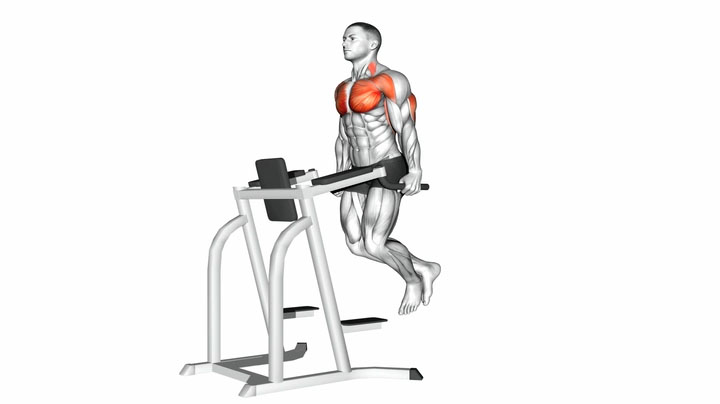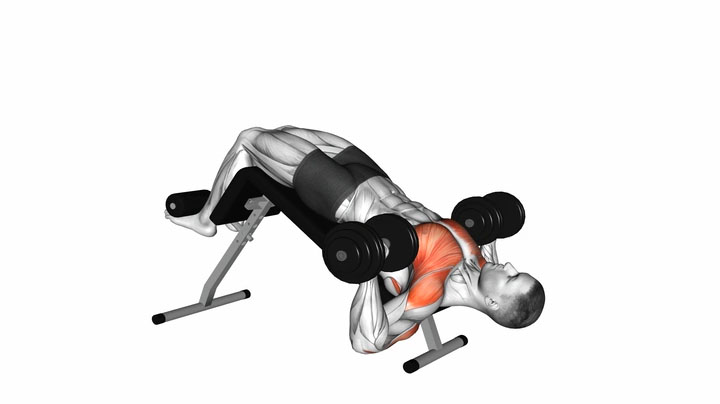What is a Ring Dip?
If you enjoy challenging yourself through bodyweight training, ring dips are a fantastic movement to learn. Ring dips are a popular full-body activity, which gymnasts master for strength, balance, and stability. The activity is also valuable for the average person because ring dips force you to work much harder to remain stable. As a result, you can push yourself to your limits without having to resort to weight belts or other tactics.
At first glance, ring and bar dips seem similar enough, and they are. The range of motion is identical on both movements, and you train many of the same muscles. But ring dips are much more challenging and better engage your core muscles because of the instability element. Aside from moving up and down, you have to remain tense, so the rings stay close to your body and stable.
How to do a Ring Dip

- Adjust the height of the rings to be at roughly stomach level.
- Stand between the rings and grab them with both hands.
- Keep your arms straight and elbows close to your body.
- Bring your shoulders back, engage your abs, and squeeze your glutes.
- Take a breath and raise your feet off the floor one at a time. Make sure you can stay balanced in this position before doing anything else.
- Once you’re confident that you’re stable enough, take another breath and begin to descend.
- Lower yourself gradually and go down until your elbows are somewhat bent and you feel a stretch in your chest.
- Press through your triceps and go back to the top gradually. Avoid explosive movements because these can lead to instability.
If you don’t have access to adjustable rings, place a gym bench or plyo box to stand over. Your goal initially should be to lift your feet off the floor instead of jumping into position. Make sure you can balance yourself well before attempting more advanced set-up techniques.
What muscles do ring dips activate?
Like bar dips, the ring variation primarily trains your chest, shoulders, and triceps. The three muscle groups work together to move you up and down. As you descend, your chest, shoulders, and triceps control the movement. Then, as you’re about to go up, these same muscles produce the force you need to extend your elbows and finish at the top. Specifically, ring dips emphasize the lower portion of your chest and the front deltoid head.
Ring dips are also incredibly challenging for your core musculature. You might have impeccable pressing strength, but you will struggle to do even a single repetition if you lack core stability. Your rectus abdominis, transverse abdominis, obliques, erector spinae, and glutes all work hard to keep you stable and in position during ring dips. Your trapezius, lats, and many small back muscles also work hard to keep you steady. The back muscles work isometrically, but they still get stronger.
Progression into Ring Dips
Progressing into a ring dip should happen gradually. Don’t force the process because ring dips are challenging, and it takes time to prepare your body.
Begin with simple push-ups to build some stability and upper body pressing strength. Start with classic push-ups and transition to decline push-ups. Once you’re comfortable with this movement, start doing push-ups with rings. The movement is similar to an incline push-up, but instead of pressing off a stable surface, you’re doing so off rings.
After push-ups, it’s time to start doing bar dips to get used to the movement, range of motion, and stability requirements. Don’t even think about ring dips until you’re rock solid on bar dips.
Once you feel confident in your stability and pressing strength, transition into ring holds. Grab a pair of rings, raise your feet off the floor, and maintain the top position to build stability and get used to rings. When you feel somewhat comfortable with rings, begin to dip but do so gradually and keep your body tense at all times.
Variations and Modifications of Ring Dips
1. Supported Ring Dip
Supported ring dips are a nice variation to learn first. An option is to keep one foot on the floor for support. Try to use as little leg support as possible while doing the movement. You can also have a training partner stay close and be there to grab you if you start to lose stability.
2. Ring dip holds

Ring dip holds are a neat variation that reinforces stability and strengthens your muscles. Holding the top or bottom position is excellent for strengthening your triceps and chest while improving your core stability.
3. Tempo ring dips
Tempo ring dips are a useful variation that reinforces stability, proper muscle engagement, and good technique. It’s best to do tempo ring dips with a coach, but you can do them alone. Set specific time goals for each rep and adhere to them. For example, lower yourself for three seconds, and push back up for another three seconds.
Mistakes to Avoid
The most harmful mistake to avoid with ring dips is rushing the process. As discussed above, ring dips are a challenging bodyweight movement that requires excellent body control and stability. Follow the suitable progression scheme and gradually work up to ring dips if you’re new to the movement.
Another mistake to avoid with ring dips is adding weight on yourself right from the start. For example, if you’re comfortable with bar dips and attach weight on yourself to do them, you might feel tempted to do the same with ring dips. But understand that ring dips will bring you back to square one, and you should respect the movement. Start with the bodyweight version.
The third mistake with ring dips relates to stability. There is nothing inherently wrong with instability because it takes time to become stable. But trainees would often grab the rings, suspend themselves in the air, and begin to shake uncontrollably. Despite their lack of a stable position, people would still attempt to dip, increasing the risk of injury. To avoid this, never lower yourself unless you’re stable and able to keep the rings steady.
Similar Exercises to Ring Dips
Chest Dip

The chest dip is an excellent alternative to ring dips. The variation is easier to start doing because the stability requirements are much lower. Instead of holding onto a pair of unstable rings, you’re holding onto a dip bar, making the movement much more predictable.
Decline Bench Press (Dumbbell)

The decline bench press doesn’t have the same or similar range of motion to ring dips, but the two movements are identical. Both exercises emphasize your lower chest, shoulders, and triceps. Ring dips and decline dumbbell bench pressing are also similar because of their stability requirements. You have to keep your body balanced on ring dips, just as you have to keep the dumbbells steady when decline pressing.
Cable Fly Crossover
The cable fly crossover is an excellent isolation movement for the chest. Like ring dips, you can emphasize the lower chest muscle fibers thanks to the angle of attack. You don’t have to work as much for good stability on the crossover, but the exercise is still challenging and complements the ring dip for balanced chest development.



